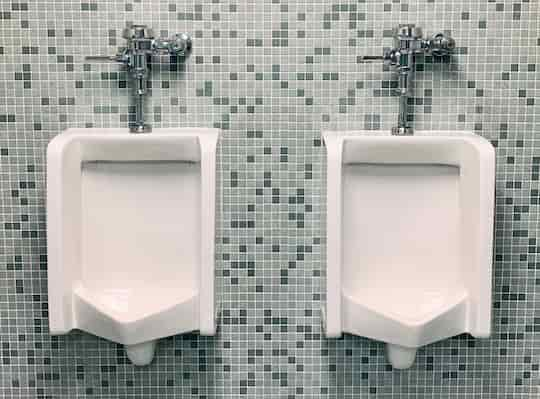Middlemist et al. designed a psychology experiment to test how men’s urination in public was affected by invasions of personal space.
Here’s a weird study that sometimes gets a mention in ethical discussions about psychology, and it’s not hard to see why.
Middlemist, Knowles & Matter (1976) designed an experiment to test how the speed and flow of men’s urination in a public lavatory was affected by invasions of personal space.
Personal space
To gather some preliminary data on men’s toilet habits, a pilot study stationed an observer in a public toilet at a US university.
He was instructed to look like he was grooming himself in the mirror, but was actually keeping a record of which urinals men stood at and their patterns of urination.
Timing them on his wristwatch, our intrepid toilet researcher measured the onset delay in micturition along with persistence of flow.
If you’re wondering how our correspondent measured these, it was by sound – which must have been no mean feat when there was multiple micturition in progress.
Sure enough the pilot study revealed men prefer not to stand next to each other in the urinals, and the closer other men are to each other, the longer it takes for them to begin urinating, and the shorter the persistence of their stream.
Spot the ethical issues
Middlemist et al. were not satisfied with this observational data, however, and decided to carry out a proper psychology experiment.
For this they required a more complicated setup, and a little covert action.
They forced unknowing urinators to spend their pennies in one (out of three) urinals that was closest to a single stall.
A confederate (who was in on the experiment) then either stood directly next to the various experimental subjects, one urinal away, or was not present at all.
Hidden in the stall was our urine measurement officer (grad students get all the best jobs).
Chief amongst his weapons was a specially designed periscope hidden in a stack of books so that the stream of urine could be directly observed.
The experimental version of the pilot study confirmed earlier findings.
With no one present, unselfconscious urinators’ average onset was 4.8 seconds, with a confederate present one urinal away, mildly self-conscious urinators’ average micturition onset was pushed up to 6.2 seconds.
Finally, with the confederate in the next urinal, it was 8.4 seconds before our bashful toilet-goer’s blessed relief began.
Urination and personality?
Rather than being left with the feeling, as you may be, that this was not only distasteful but also a bit of a waste of time, the psychologist in me comes out.
I’m wondering about personality correlates and personal space.
For example, is neuroticism positively correlated with increasing micturition onset, while extroversion is negatively correlated?
The problem is then you’ve got to get urinators to fill in a personality measure on the way out, which will expose all the periscope business, which in turn may lead on to a variety of uncomfortable conversations — both with participants and with ethics committees.
Perhaps we’ll just leave this one as it is.
.

